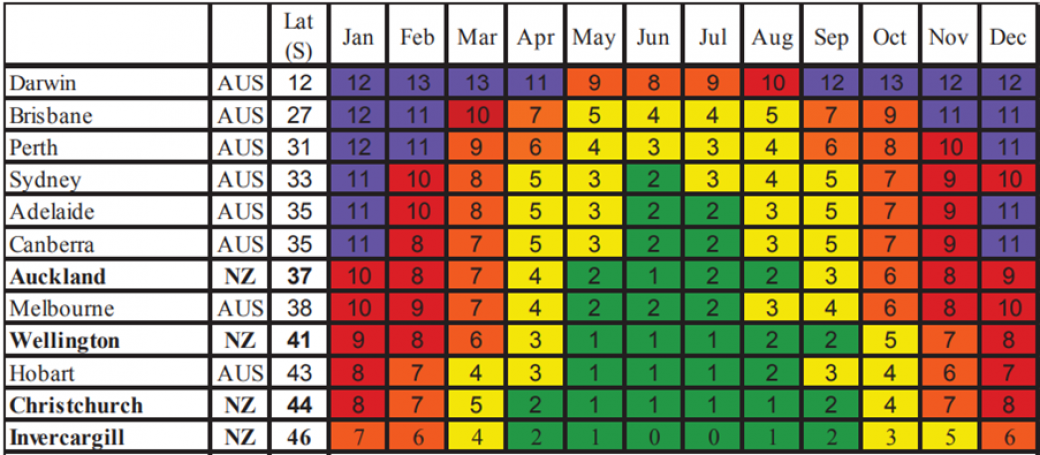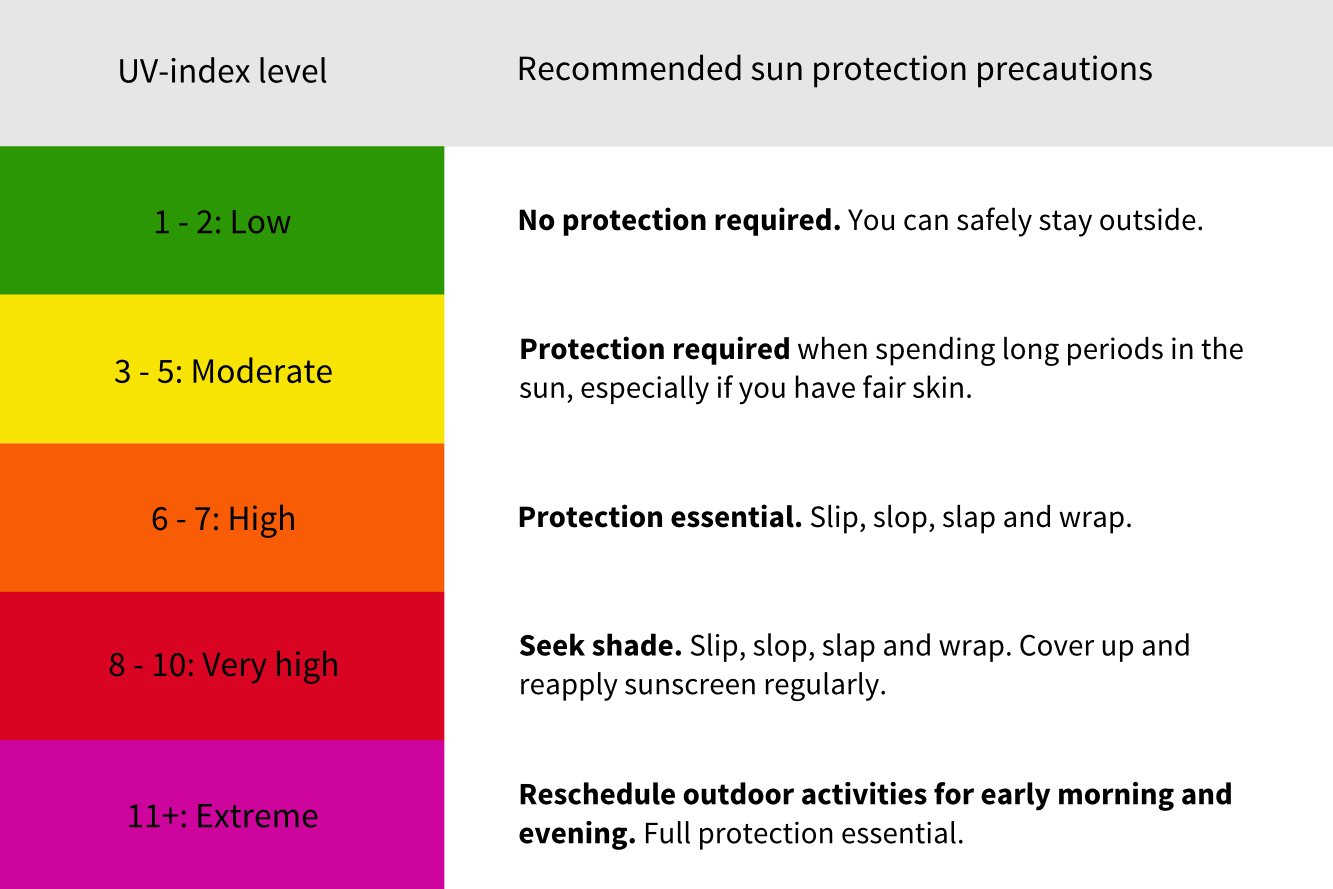UV levels
This section contains information on UV Index levels in Aotearoa New Zealand.
On this page:
Summer has the highest UV levels
In New Zealand, UV levels are highest during summer but can also be relatively high in spring and autumn. UV levels are higher in the north of the country. Table 1 below shows the average UV Index (UVI) levels for regions across New Zealand and Australia based on latitude.
Table 1: Mean UVI in New Zealand (averaged over one hour at solar noon)

Source: McKenzie 2017 [1]
Factors affecting UV levels
UV levels follow seasonal patterns with summer having the highest average UVI. Spring and Autumn also experience high levels. Reasons for high UV levels include:
- The Earth is closer to the sun in December and January
The Earth has an elliptical orbit and passes closest to the Sun during December and January. This means that the sun is closer to New Zealand in our summertime than it is to northern hemisphere countries in their summertime.
- Low air pollution levels lead to higher UV levels
The atmosphere in New Zealand is comparatively clean due to its low population density and remoteness. This means more UV radiation can pass through the atmosphere unhindered.
- The ozone hole lets through more UV radiation
In summer, ozone-depleted air moves over New Zealand from Antarctica. This ozone hole means there are fewer ozone molecules to absorb UV radiation before it reaches Earth’s surface.
- Cloud cover impacts day to day UV levels
Cloud cover absorbs a proportion of the UV radiation that enters the atmosphere. Around 90% of UV will pass through light cloud cover.
Any changes in UV index levels due to ozone between 1994 and 2016 have been small with factors such as cloud cover and the angle of the sun having a greater impact on changes [1].
New Zealand has high UV levels in contrast to other countries
Summertime UV levels are higher in New Zealand than at similar latitudes in the northern hemisphere [2]. However, approximately half the globe receives greater UV levels than New Zealand. It is believed that the high rates of skin cancers and other UV-related conditions, such as cataracts, in New Zealand is due to the largely white European population and strong tanning and outdoor culture [1].
If you would like to monitor the daily UVI in your area, you can download the UVNZ app from the Google Play Store or Apple App Store.
Information about the data
UVI levels
Source: NIWA [3]
Definition: The UV Index is an international, scientific measure of the level of UV radiation from the sun. The UV Index is based on erythemally weighted irradiances (i.e. sun-burning irradiances), published by NIWA. The higher the number on the UV Index, the higher the radiation level.
Table 3: UV index levels and sun protection precautions

Source: McKenzie 2008 [3]
